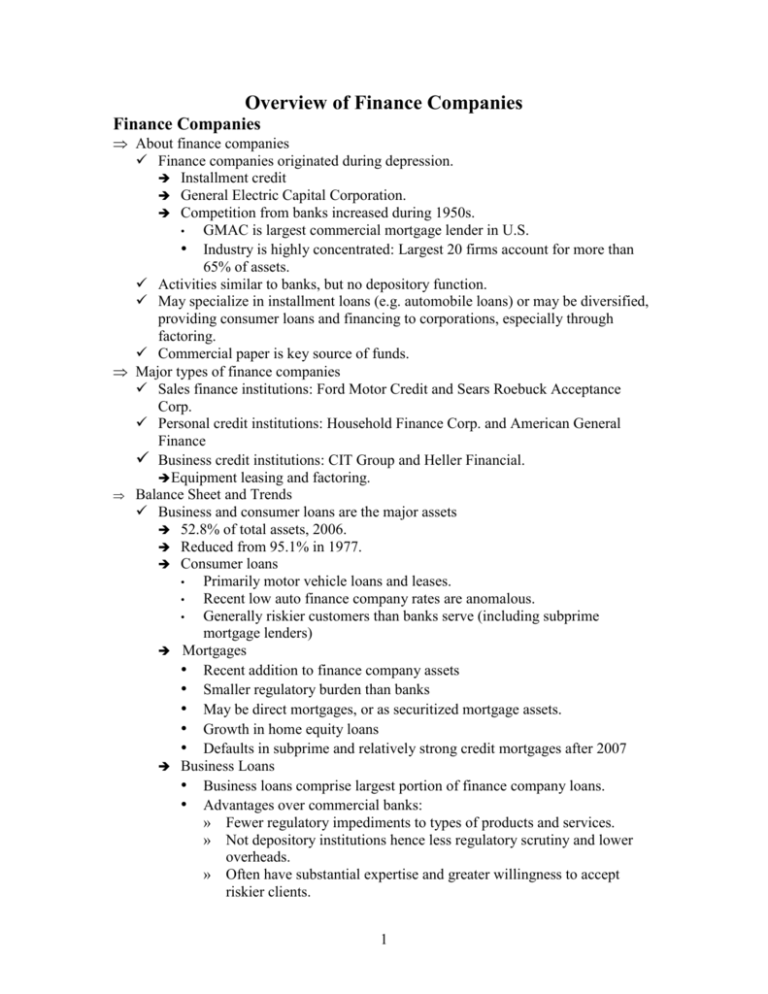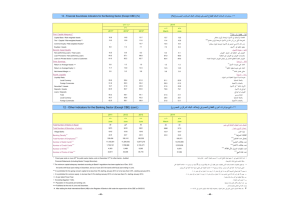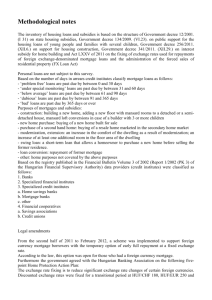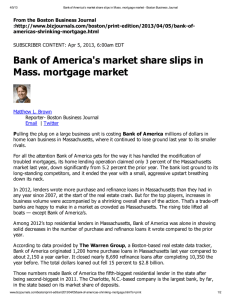Overview of Finance Companies
advertisement

Overview of Finance Companies Finance Companies About finance companies Finance companies originated during depression. Installment credit General Electric Capital Corporation. Competition from banks increased during 1950s. • GMAC is largest commercial mortgage lender in U.S. • Industry is highly concentrated: Largest 20 firms account for more than 65% of assets. Activities similar to banks, but no depository function. May specialize in installment loans (e.g. automobile loans) or may be diversified, providing consumer loans and financing to corporations, especially through factoring. Commercial paper is key source of funds. Major types of finance companies Sales finance institutions: Ford Motor Credit and Sears Roebuck Acceptance Corp. Personal credit institutions: Household Finance Corp. and American General Finance Business credit institutions: CIT Group and Heller Financial. Equipment leasing and factoring. Balance Sheet and Trends Business and consumer loans are the major assets 52.8% of total assets, 2006. Reduced from 95.1% in 1977. Consumer loans • Primarily motor vehicle loans and leases. • Recent low auto finance company rates are anomalous. • Generally riskier customers than banks serve (including subprime mortgage lenders) Mortgages • Recent addition to finance company assets • Smaller regulatory burden than banks • May be direct mortgages, or as securitized mortgage assets. • Growth in home equity loans • Defaults in subprime and relatively strong credit mortgages after 2007 Business Loans • Business loans comprise largest portion of finance company loans. • Advantages over commercial banks: » Fewer regulatory impediments to types of products and services. » Not depository institutions hence less regulatory scrutiny and lower overheads. » Often have substantial expertise and greater willingness to accept riskier clients. 1 Major liabilities: commercial paper and other debt (longer-term notes and bonds). Finance firms are largest issuers of commercial paper • Commercial paper maturities up to 270 days. Industry Performance Strong loan demand Strong profits for the largest firms e.g. Household International, Associates First Capital, Beneficial Most successful have become takeover targets Citigroup/Associates First Capital, Tyco International/CIT Group High risk has a downside: Regulation of Finance Companies Federal Reserve definition of Finance Company Firm, other than depository institution, whose primary assets are loans to individuals and businesses. Much lower regulatory burden than depository institutions. Not subject to Community Reinvestment Act. With less regulatory scrutiny, finance companies must signal safety and soundness to capital markets in order to obtain funds. Lower leverage than banks (11.4% capital-assets versus 10.36% for commercial banks in 2006) 2











